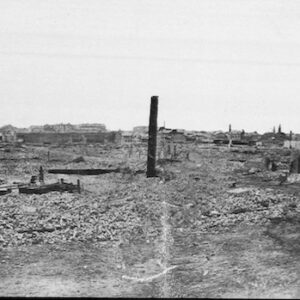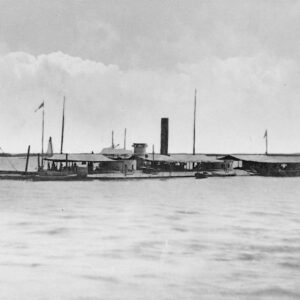Tag: Mobile AL
Wikipedia says: Mobile is the county seat of Mobile County, Alabama, United States.
Alabama’s only saltwater port, Mobile is located on the Mobile River at the head of the Mobile Bay and the north-central Gulf Coast The Port of Mobile has always played a key role in the economic health of the city, beginning with the settlement as an important trading center between the French colonists and Native Americans, down to its current role as the 12th-largest port in the United States.
Mobile was founded in 1702 by the French as the first capital of Louisiana. During its first 100 years, Mobile was a colony of France, then Britain, and lastly Spain. Mobile became a part of the United States in 1813, with the annexation by President James Madison of West Florida from Spain. The city surrendered to Federal forces on April 12, 1865, after Union victories at two forts protecting the city. This, along with the news of Johnston’s surrender negotiations with Sherman, led Taylor to seek a meeting with his Union counterpart, Maj. Gen. Edward R. S. Canby. The two generals met several miles north of Mobile on May 2. After agreeing to a 48-hour truce, the generals enjoyed an al fresco luncheon of food, drink, and lively music. Canby offered Taylor the same terms agreed upon between Lee and Grant. Taylor accepted the terms and surrendered his command on May 4 at Citronelle, Alabama.
By the time Mobile was included in the Mississippi Territory in 1813, the population had dwindled to roughly 300 people. The city was included in the Alabama Territory in 1817, after Mississippi gained statehood. Alabama was granted statehood in 1819; Mobile’s population had increased to 809 by that time.
Mobile was well situated for trade, as its location tied it to a river system that served as the principal navigational access for most of Alabama and a large part of Mississippi. River transportation was aided by the introduction of steamboats in the early decades of the 19th century. By 1822 the city’s population was 2800.
The Industrial Revolution in Great Britain created shortages of cotton, driving up prices on world markets. Much land well suited to growing cotton lies in the vicinity of the Mobile River, and its main tributaries the Tombigbee and Alabama Rivers. A plantation economy using slave labor developed in the region and as a consequence Mobile’s population quickly grew. It came to be settled by attorneys, cotton factors, doctors, merchants and other professionals seeking to capitalize on trade with the upriver areas.
From the 1830s onward, Mobile expanded into a city of commerce with a primary focus on the cotton and slave trades. Many slaves were transported by ship in the coastwise slave trade from the Upper South. There were many businesses in the city related to the slave trade – people to make clothes, food, and supplies for the slave traders and their wards. The city’s booming businesses attracted merchants from the North; by 1850 10% of its population was from New York City, which was deeply involved in the cotton industry. Mobile was the slave-trading center of the state until the 1850s, when it was surpassed by Montgomery.
The prosperity stimulated a building boom that was underway by the mid-1830s, with the building of some of the most elaborate structures the city had seen up to that point. This was cut short in part by the Panic of 1837 and yellow fever epidemics. The waterfront was developed with wharves, terminal facilities, and fireproof brick warehouses. The exports of cotton grew in proportion to the amounts being produced in the Black Belt; by 1840 Mobile was second only to New Orleans in cotton exports in the nation.
With the economy so focused on one crop, Mobile’s fortunes were always tied to those of cotton, and the city weathered many financial crises. Mobile slaveholders owned relatively few slaves compared to planters in the upland plantation areas, but many households had domestic slaves, and many other slaves worked on the waterfront and on riverboats. The last slaves to enter the United States from the African trade were brought to Mobile on the slave ship Clotilda. Among them was Cudjoe Lewis, who in the 1920s became the last survivor of the slave trade.
By 1853, fifty Jewish families lived in Mobile, including Philip Phillips, an attorney from Charleston, South Carolina, who was elected to the Alabama State Legislature and then to the United States Congress. Many early Jewish families were descendants of Sephardic Jews who had been among the earliest colonial settlers in Charleston and Savannah.
By 1860 Mobile’s population within the city limits had reached 29,258 people; it was the 27th-largest city in the United States and 4th-largest in what would soon be the Confederate States of America. The free population in the whole of Mobile County, including the city, consisted of 29,754 citizens, of which 1,195 were free people of color. Additionally, 1,785 slave owners in the county held 11,376 people in bondage, about one-quarter of the total county population of 41,130 people.
During the American Civil War, Mobile was a Confederate city. The H. L. Hunley, the first submarine to sink an enemy ship, was built in Mobile. One of the most famous naval engagements of the war was the Battle of Mobile Bay, resulting in the Union taking control of Mobile Bay on August 5, 1864. On April 12, 1865, three days after Robert E. Lee’s surrender at Appomattox Courthouse, the city surrendered to the Union army to avoid destruction after Union victories at nearby Spanish Fort and Fort Blakely.
On May 25, 1865, the city suffered great loss when some three hundred people died as a result of an explosion at a federal ammunition depot on Beauregard Street. The explosion left a 30-foot (9 m) deep hole at the depot’s location, and sank ships docked on the Mobile River; the resulting fires destroyed the northern portion of the city.
Federal Reconstruction in Mobile began after the Civil War and effectively ended in 1874 when the local Democrats gained control of the city government. The last quarter of the 19th century was a time of economic depression and municipal insolvency for Mobile.
Showing all 2 resultsSorted by latest

